Southern Man
Appeared in the Tampa Bay Times, September 2004
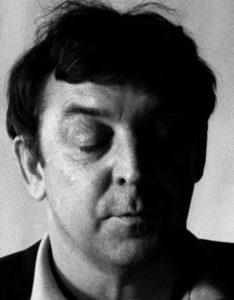
I’m no good at small talk, so when I met Terry Southern 20 years ago, I didn’t know what to say and blurted out, “I’m writing about you!” He looked alarmed, so I offered more: “I’m writing a chapter on you in a book on humor.” Southern gazed at me blankly for a moment, looking like he wanted to bolt from the room. Finally, in a soft little voice, he said, “Please be kind.”
How odd, I thought. Here’s one of the great writers of my lifetime, the wickedly funny guy behind Dr. Strangelove and The Loved One and Easy Rider, the guy who was writing gonzo journalism when Hunter Thompson was still a young pup, the guy who created the classic Candy and one of those writers who turned me into a reader. What’s this please-be-kind shit?
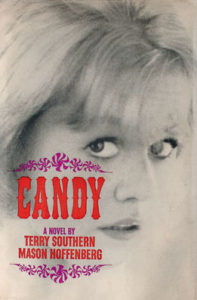
Now I know. The Candy Men, Nile Southern’s book about his father, helps me understand the Terry Southern I met in 1985. He had done all of those great things – pioneered a new, impressionistic journalism, revolutionized screenwriting, published witty, satiric novels – and he’d found himself unappreciated and something of an outcast at the deep end of his life. Southern died 10 years later, in debt and heartbroken, and his devoted son set about to restore his father’s reputation. Nile Southern did it the right way – simply by making sure his father’s work was in print. Terry Southern doesn’t need any hype or revisionism or academic rediscovery. Once you’ve read him, you’ll never forget him.
First, his books: There’s Candy (more on that in a minute), Flash and Filigree, The Magic Christian, Blue Movie and Texas Summer. Those are the novels. He published two collections of journalism – Red-Dirt Marijuana and (posthumously) Now Dig This.
His screenplays introduced some of the classic images, scenes and dialogue (“You can’t fight in here – this is the War Room!”) of the 1960s: Dr. Strangelove, The Loved One, The Cincinnati Kid, Barbarella, Easy Rider, The End of the Road.
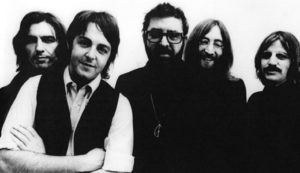
In short, this guy made a great contribution to world culture. Please be kind?
Nile Southern’s Candy Men uses his father’s first big book – Candy – as a window on his father’s life. It turns out that Terry Southern’s life was a common writer’s tale – that of a great and original artist who was abused, misunderstood and unappreciated near the end of his life. He had accomplished so much – and lost so much – that near the end (he died in 1995, collapsing on his way to the screenwriting class he taught at Columbia University) he might have needed a little reaffirmation.
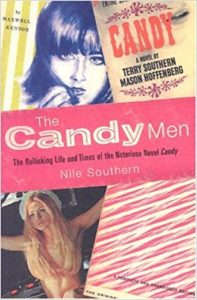
Southern was an expatriate American in Paris in the 1950s, running with the heavy duty Paris Review crowd (George Plimpton, Peter Matthiessen), hanging out with William S. Burroughs, smoking dope and bursting with talent and ideas, obviously on his way to writing the great American novel. But on the way there, he contracted with Maurice Girodias of the notorious Olympia Press to write a quickie sex book. Candy – modeled on Voltaire’s Candide – was no mere sex book. A biting satire, a farce, a sex spoof and a stirring example of erotica . . . it was all of these things at once. It took a writer of Southern’s immense talent to pull it off. But because of deadlines and a few writing roadblocks, he needed help and turned to his friend and fellow expatriate Mason Hoffenberg to write a few key sections.
When Girodias published Candy in 1958 it was under the name Maxwell Kenton. Southern had quality-lit (his term) ambitions and would soon publish Flash and Filigree and The Magic Christian so he didn’t want to damage the future Terry Southern franchise. But Candy would bring him much more acclaim than either of those books.
Candy lived in the underground but became hugely successful by the mid-1960s, though its coauthors (listed by their real names by then) made only pennies from the book. Girodias claimed he owned the book and its copyright existed in never-neverland. Bootlegged around the world, the book was a scorching success for everyone but the authors and the original publisher (who, in an example of perfect kismet) was himself burned by publishing pirates.

In the long run, everybody got burned by Candy. In the meantime, in part because of patrons such as the brilliant actor Peter Sellers (who’d bought 100 copies of The Magic Christian to give to friends), Southern turned to film with Dr. Strangelove. Although he shared screenplay credit for Easy Rider, he didn’t share in the profits (and it was one of the best payoffs on an investment in film history). After several successful films, he went into screenplay-development hell, which pulled him further away from the quality-lit ambitions he showed with his novels. He became a fixture of 1960s hipness (that’s him in the shades on the cover of Sgt. Pepper’s Lonely Hearts Club Band) and a counterculture hero.
Collaborator Mason Hoffenberg was an enfant terrible who became much more terrible as the years passed, sort of a poster boy for unrealized potential. His greatest art was probably his conversation, which was wickedly entertaining and caustic, and he touched the lives of artists as disparate as Bob Dylan and Mel Brooks. Eventually, he turned on Southern and the old friends split bitterly – in part over the who-did-what disputes inherent in dual authorship, particularly when the work in question is something as notorious as Candy.
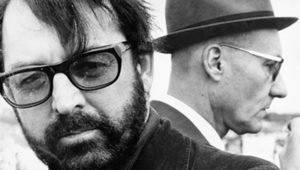
In the end, this is a biography of Candy, a book, and how the lives of these three men revolved around her. To his immense credit, Nile Southern stands out of the way and tells the story largely through letters and interviews by Terry Southern, Mason Hoffenberg and Maurice Girodias. (The three main characters are all dead.) Though Hoffenberg viciously turned on his former collaborator, Nile Southern doesn’t rush in to take his father’s side. He lets the facts – and the letters and the interviews – speak for themselves.
It’s a wonderful, stirring and ultimately tragic book, and the whole tale was started by a piece of writing intended to a quick sell for a cheap thrill. Who knew it would turn out to be art?
Back in the 1980s, when I was doing my research on Southern for that chapter in the book on humor, it was hard to track down a copy of Candy. I finally found a tattered 25-cent pirated paperback preserved under glass in the rare-book room of the university library. I could read the book only in the presence of a security guard. Of all the funny things to come from Candy, maybe that’s what makes me laugh the most.
(By the way – for a good time, check out terrysouthern.com. Nile Southern maintains this repository of his father’s work and it is a hugely entertaining Web
